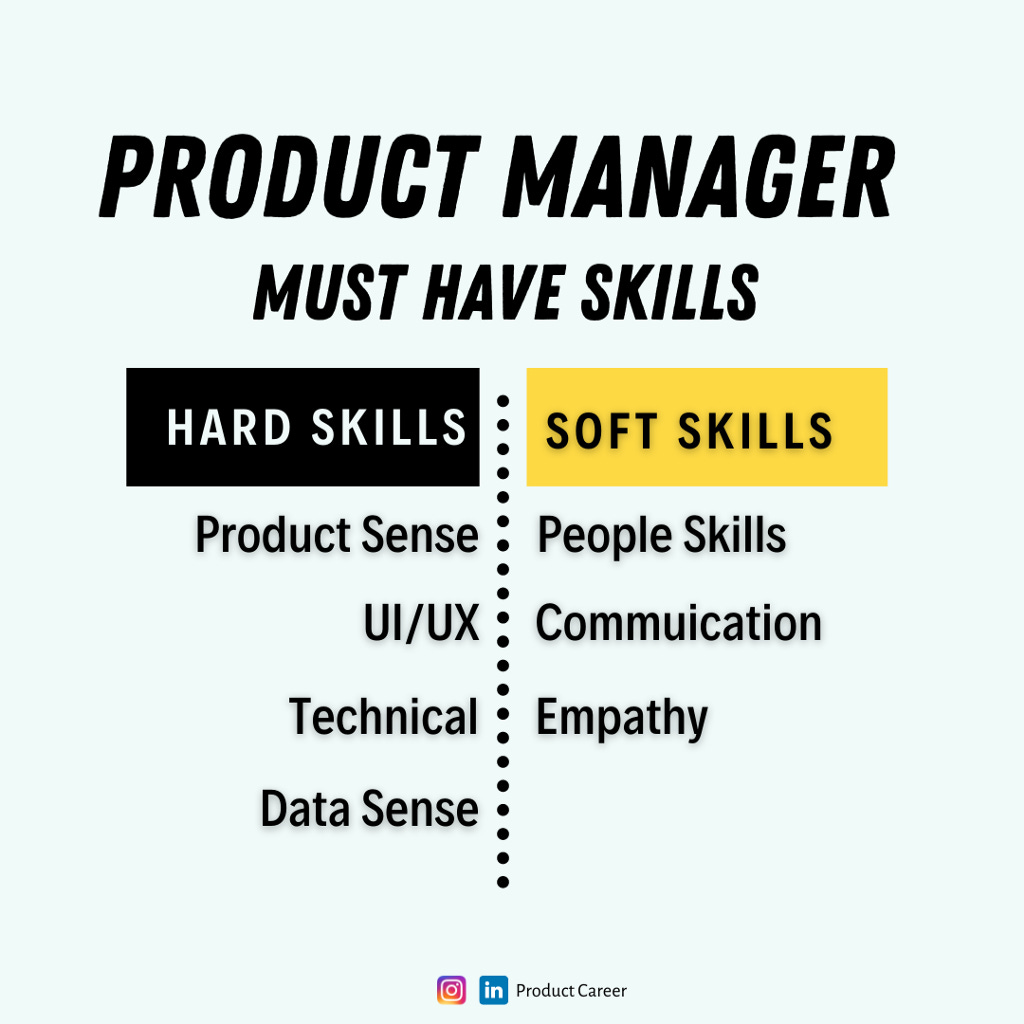Product sense(?)
What is it? How to get started in building product sense?
After working as a product manager for about a decade, both in B2B and B2C space, I have narrowed down a few must-have skills for product managers.
As you start your PM journey, you will be good in a few and over time you will build your skill set to be better in the skills you lack but overall if I were to condense a handful of skills — it would be these in my experience.

Product Sense
Think of this as business knowledge about the product, industry, ability to think the pros and cons of a problem from many different aspects.
Product sense involves having to think end-to-end about the business side and logically making assumptions for the unknowns.
Depending on your tenure of product career (Intern PM, Associate PM, PM, Group PM, Director, and beyond) Employers will expect you to be adept in this area according to your years of experience and will is also a required interview segment.
For example: Let’s say you want to work at Doordash or Zomato. Let’s explore a series of questions that might help build a mental framework to start from 30000-foot level to go down to the 3000-foot level.
What domain are these Companies in?
Hint: Food delivery/ grocery delivery (now)
What are the industry trends in this domain?
Hint: 2020 is definitely the year of accelerated growth for these companies. what else about the trend?
What’s their competition?
There are two types of competitions — Direct competition and Indirect competition.
- Direct competition with Zomato (India) and Doordash(US) is Uber Eats (US and India), Grubhub (US), Swiggy (India) etc.
- Indirect competition = Delivery networks — FedEx, USPS, etc. — Why because companies like Zomato & Doordash are creating their own delivery and eventually there is nothing stopping them eventually to be able to deliver anything.
So when trying to understand the big picture always look at both to understand the impact the company could create.
TIP — being able to understand the landscape will help spot investment opportunities with stocks or investing in start-ups, etc( if that’s of interest to you, but I digress… coming back)
How are they different from their competitors?
What value add these companies are creating with their product. I think each one of them has its own value. So when trying to understand the business be sure to understand what makes the company or product unique.
What type of products the company has?
Software, Hardware, or for large companies what is their eco-system of products? Example: Uber eats, but they have other products in the Uber umbrella.

Who are their customers?
Have you thought about the various personas of a product?
- So who are these different personas using the product? If we are talking about Zomato & Doordash — Can you categorize the type of users with district categories and create their need-based chart?
- Example: working professionals who order food during weekdays what is their goal?
Have you used their product?
Are you a consumer or a product? Do you like it or don’t like it? Can you think of improvements to the product?
- Can you do a project to spot opportunities/improvement areas for the project?
- How would you improve their product?
- Perhaps think of a feature in a product? or think of a complete new complementary product to go with the original product line?
- For example: In Doordash, As a PM I would introduce a special button to mention food allergies and to add to meal preferences. I would love to be able to let the restaurants know to not add fish sauce to my Thai curry. (Doordash current solution of adding comments is not enough) I am sure there are others who faced the same problem. More on this in DATA SENSE.
BUT a word of caution, feature ideas or product ideas without an understanding of the product, market, and the user’s needs and pain points are JUST A WISHLIST. ⠀
Closing thoughts: For an idea to be worth solving — has to be meet in a minimum of three areas — it has to be (which is a concept discussed in great detail in Dan Olsen’s The Lean Product Playbook.)
1. VIABLE for business ⠀
2. FEASIBLE technologically⠀
3. VALUE for users. ⠀
Until next Thursday!
-Nazuk
I am experimenting with some free-flow writing every week and sharing my thoughts and learnings from my day-to-day work as a working PM. Feel free to connect with me on social media or write back to me with your thoughts. Would love to hear from you.
Instagram - 15K+ || Linkedin - 4K || Newsletter -1200+ readers || Youtube - Goal 1K

